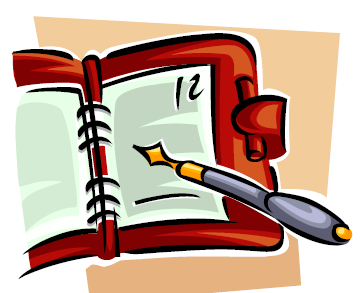Main Ideas
- Writing down your income and expenses can provide a guide for planning your spending.
- A spending plan can be a guide for achieving goals.
- A spending plan needs to be simple and suited to your needs.

Key Words
Spending plan
A simple guide to show where money comes from, where it’s going and how to use it to reach goals.
Income
The money you receive. (For children, the sources of income are usually allowances, gifts, handouts and earnings.)
Expenses
The money you spend to buy the things you need and want.
Need
Something necessary for life, such as basic food, clothes, shelter and medical care.
Want
Something you believe or think will make your life happier or easier, even though you can live
Money Management
“Money management” is simply knowing how much money you have and then planning how to use it. A good method of managing money is using a written spending plan. Children may not know the cost of items the family provides for them or how much they are spending until they see it written down.
A spending plan can help children of almost any age to clarify their ideas and goals. The plan is a tool to guide them in making decisions and choices. When you make a spending plan, remember the difference between needs and wants. A need is something necessary for life, such as basic clothing, food and housing. A want is something you believe will make life happier or easier, but it is not necessary for life. In other words, you could live without it.
Don’t wait until children are old enough to earn money before you start talking about spending plans. As soon as children are old enough to get an allowance, introduce them to the idea of a spending plan. A plan can be for a week, a month or a whole year, depending on a child’s age and maturity, and on the amount and frequency of allowance or other income. The plan for a 5-year-old would be very different from a 15- year-old’s plan.

Making a Spending Plan
A spending plan is a simple guide to show where money comes from, where it’s going, and how to use it to reach goals. Making spending plans with your children can help you decide how much allowance each child needs.
To make a spending plan, your child needs to know the answers to three questions:
- How much money do I have for spending?
- What are my goals?
- How much will these goals cost?
Where Do You Start?
You can begin by keeping a spending record for each child for a few weeks. Make sure that you or your child writes down all the money spent and what it was spent on.
After three or four weeks of keeping a record, you are ready to make a spending plan. By this time, your child will know where the money is being spent and will have a better idea of what expenses to plan for.
Steps to making a spending plan
- Write down expected income for the coming week and total. Examples include allowance, earnings and gifts.
- Write down the expenses you are planning on during the week. Include the amounts to be saved and shared. Add them all together. How does this compare with income? If planned expenses are more than expected income, decide on which expenses to cut back or plan to increase income by looking for ways to earn money.
- During the week, keep track of expenses. At the end of the week, add them up.
- Now compare your planned expenses and your actual expenses.
- Make necessary changes in your spending plan for next week. If expenses are out of line with income, you will have to make changes in one or both. Are there items of spending, saving or sharing that should be cut out or reduced? Should the allowance be increased? What about earning more money?
The success of the plan depends on frequent review of where money is going.

Things To Do
Parents
You may want to work on a spending plan for the whole family, either alone or in a family meeting with your children, if you do not currently have a plan.
Preschoolers, 6- to 12-Year- Olds, and Teenagers
Use the following charts to help each child work out a personal spending plan. For a preschooler, the plan will be very short and simple. You may want to make up your own forms. The important thing is to have a written outline of income and expenses (including sharing and saving) to use as a guide. A spending plan answers the question, “Can I afford this?” which children, like adults, have to face daily.
Help your children learn more about their needs and wants. Use the chart, “Personal Expenses of Children,” in this lesson to help you. Filling out the chart will help both you and your children understand their money needs better.
Discuss the family spending plan and get children's ideas of how to reduce expenses or increase income if the plan needs changes.
Personal Expenses of Children
Possible Needs or Wants
Under Age 6
Small toys and playthings; books and videos; ice cream or snacks; crayons and paints; gifts for others; church
Ages 6 to 9
Games and toys; books and magazines; snacks; hobbies; sports equipment (skateboard, skates, bicycle, game balls); school lunches, school activities; gifts for others; church and contributions; club dues and expenses; field trips
Ages 9 to 12
Snacks; school lunches; school expenses and activities; hobbies and special projects; books and magazines; CDs; sports equipment; bicycle; games to play at home; club dues and expenses; trips and special events; gifts for others; church and contributions; some clothing items; some grooming supplies; savings for specific purposes
Ages 13 to 15
MOST items in age group 9 to 12 and also possibly grooming equipment and supplies; cosmetics; clothing and jewelry; movies and concerts; camera and supplies; bus fare or other transportation; money for get-togethers with friends
Ages 16 to 18
MOST items in age groups 9 to 12 and 13 to 15 and also possibly clothing or uniform for a job; gasoline (family or own vehicle); own vehicle; vehicle license and insurance; own telephone; savings for education or travel
Additional Resources
- National 4-H Cooperative Curriculum System, Inc. Consumer Savvy
- Be the "E" (Entrepreneur)
Koehler, C., Crites, A., Behal, P., and Horton, S.
2006,
Money Sense for Your Children - The Spending Plan,
Extension | University of Nevada, Reno, FS-06-96


